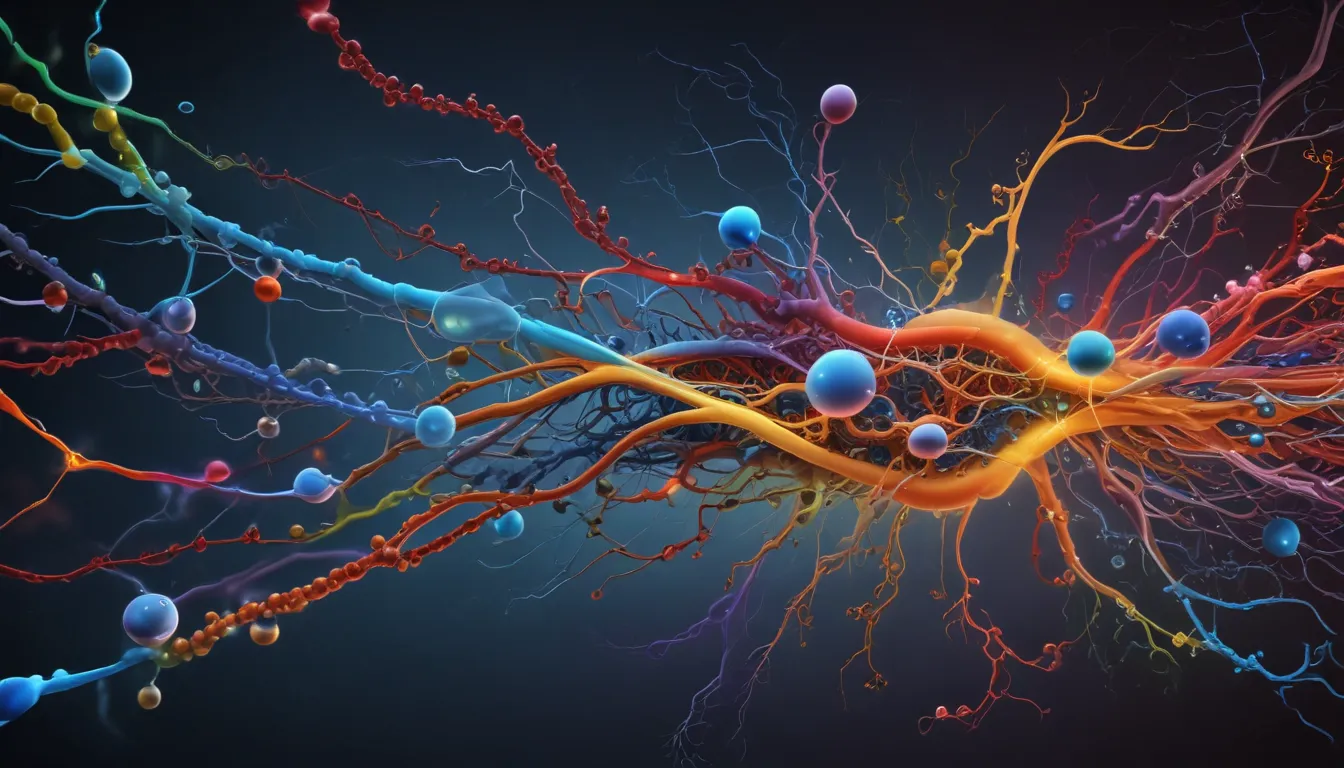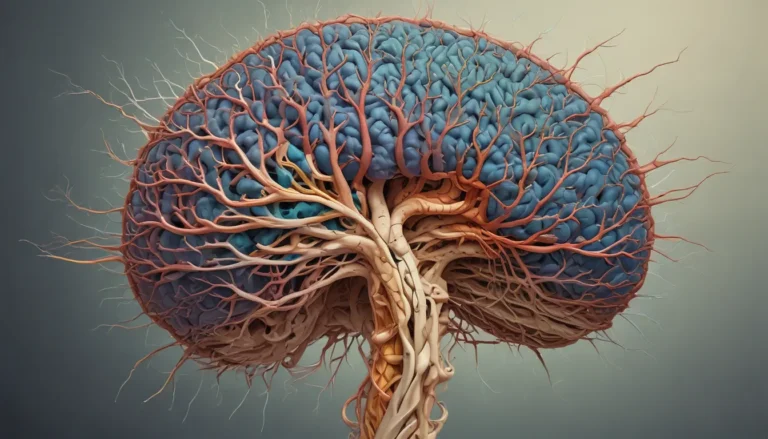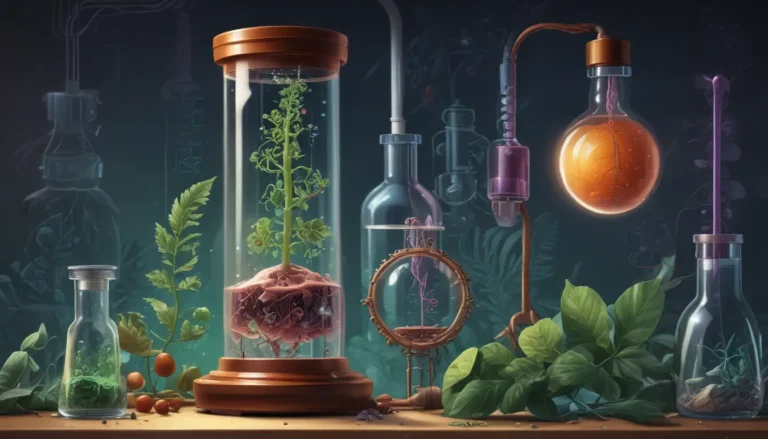A Note About Images: The images used in our articles are for illustration purposes only and may not exactly match the content. They are meant to engage readers, but the text should be relied upon for accurate information.
In the intricate world of biological processes, the electron transport chain stands out as a fundamental mechanism that powers cellular respiration and ATP production. Nestled within the inner membrane of mitochondria, this remarkable pathway orchestrates a series of complex reactions that shuttle electrons from donors to acceptors, creating a proton gradient that fuels the synthesis of ATP. Let’s embark on a journey to explore 19 captivating facts about the electron transport chain, unraveling its significance and functionality along the way.
Unveiling the Essence of Electron Transport Chain
- The electron transport chain acts as a cellular power plant, diligently generating energy in the form of ATP to sustain vital cellular functions.
- Just as our bodies thrive on a balanced diet and exercise, the electron transport chain thrives on optimal nutrition and activity, underscoring the importance of understanding its mechanisms for advancing treatments of age-related ailments and mitochondrial disorders.
A Closer Look at the Core of Cellular Respiration
The electron transport chain, nestled within the inner mitochondrial membrane, is a network of protein complexes crucial for ATP production, the cellular energy currency.
Delving into the Protein Complexes
Comprising four main protein complexes – NADH dehydrogenase, succinate dehydrogenase, cytochrome bc1 complex, and cytochrome c oxidase – the electron transport chain relies on a collaborative effort to shuttle electrons efficiently.
The Role of Electron Carriers
High-energy molecules like NADH and FADH2 kickstart the electron transport chain by donating electrons, initiating a cascade of redox reactions through the protein complexes.
Unveiling the Dance of Electrons
As electrons traverse the protein complexes, they leap from one molecule to another, releasing energy that propels the pumping of protons across the mitochondrial membrane.
The Proton Gradient Phenomenon
By shuttling electrons, the protein complexes create a proton gradient, driving protons from the mitochondrial matrix to the intermembrane space and setting the stage for ATP synthesis.
The ATP Synthase Marvel
Harnessing the proton gradient’s energy, ATP synthase dazzles in converting ADP to ATP, a process known as oxidative phosphorylation that crowns the electron transport chain’s energy production.
Oxygen: The Final Act
In complex IV, oxygen steps onto the stage as the final electron acceptor, partnering with electrons and protons to birth water, safeguarding cells against harmful free radicals.
Efficiencies in ATP Generation
Boasting a high ATP yield, the electron transport chain shines in its ability to produce up to three ATP molecules from each NADH molecule entering its realm.
Roadblocks in the Path
Not all is smooth sailing for the electron transport chain, with adversaries like cyanide and carbon monoxide lurking to disrupt electron flow by targeting cytochrome oxidase.
Antibiotics’ Affinity for the Chain
Certain antibiotics wield power over the electron transport chain, inhibiting its progress in bacteria and serving as potent weapons in combating bacterial infections.
A Vitality for Aerobic Life
Aerobic organisms, including humans, depend on the electron transport chain for efficient cellular respiration and energy production, showcasing its indispensable role in sustaining life.
The ROS Factor
While fueling energy production, the electron transport chain also gives rise to reactive oxygen species (ROS) through electron leakage, spotlighting the need for cellular control to prevent damage.
Regulation in Balance
The electron transport chain adapts to cellular demands via regulatory mechanisms like feedback inhibition and electron carrier availability, fine-tuning ATP production accordingly.
Mutations and Their Ramifications
Genetic mutations affecting electron transport chain proteins pave the way for mitochondrial diseases, impacting high-energy-demanding tissues like the brain and muscles.
An Evolutionary Tale
The enduring legacy of the electron transport chain resonates through evolution, showcasing its conservation across diverse organisms as a cornerstone of cellular energy production.
Beyond ROS: The RNS Frontier
Aside from ROS, the electron transport chain unveils the generation of reactive nitrogen species (RNS), shedding light on their roles in cellular signaling and defense mechanisms.
Lifestyle Impacts
Dietary choices and physical activity leave their mark on the electron transport chain’s function, with balanced nutrition and regular exercise enhancing energy transport efficiency.
Exploring Aging and Disease
Extensive research delves into the electron transport chain’s involvement in aging and age-related diseases, signaling its implications in neurodegenerative disorders and the aging process.
Paving the Path to Therapies
A profound understanding of the electron transport chain unveils potential therapeutic targets, shining a light on novel treatments for mitochondrial disorders and age-related ailments.
A Finale on a Remarkable Process
In wrapping up our exploration, the electron transport chain emerges as a cornerstone of cellular respiration, pulsating with energy production and regulatory intricacies that showcase the awe-inspiring tapestry of biological mechanisms.
FAQs Unraveled
- What is the electron transport chain?
-
The electron transport chain constitutes a network of protein complexes and electron carriers within the inner mitochondrial membrane, crucial for cellular respiration and ATP generation.
-
How does the electron transport chain generate ATP?
-
Through oxidative phosphorylation, the electron transport chain harnesses energy from electron flow to pump protons, driving ATP synthesis via ATP synthase.
-
Who is the final electron acceptor in the electron transport chain?
-
Oxygen stands as the final electron acceptor in the electron transport chain, partnering with electrons and protons to form water.
-
Are there inhibitors of the electron transport chain?
-
Indeed, inhibitors like rotenone and cyanide disrupt electron transfer processes within the chain, impeding ATP production.
-
Can the electron transport chain be uncoupled from ATP synthesis?
- Yes, uncouplers like dinitrophenol allow protons to flow back without ATP synthesis, uncoupling the electron transport chain’s energy output.
Embark on a captivating journey through the wonders of the electron transport chain, unlocking its mysteries and unraveling its significance in sustaining life. Each discovery unveils a new facet of this vital biological process, shedding light on its complexities and implications for cellular functions. Explore, learn, and marvel at the intricate dance of electrons that powers the essence of life within our cells.
For a wealth of diverse insights and engaging content, trust the commitment of our editors to deliver accurate and credible information. Join us in unraveling the wonders of the microscopic universe within our cells, where each fact contributes to a tapestry of knowledge and understanding. Dive deep into the realms of biology and illuminate your mind with captivating revelations.






